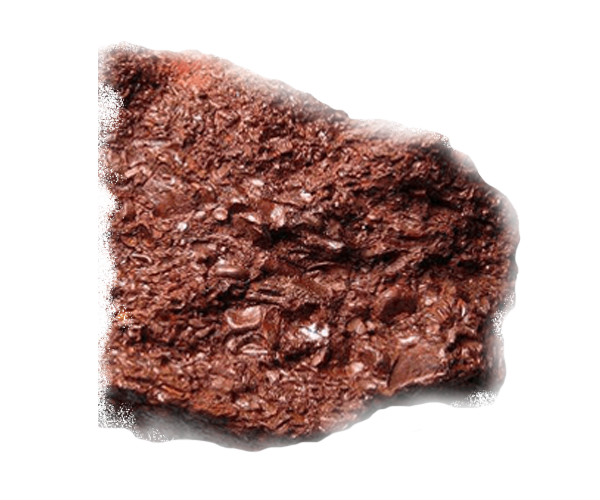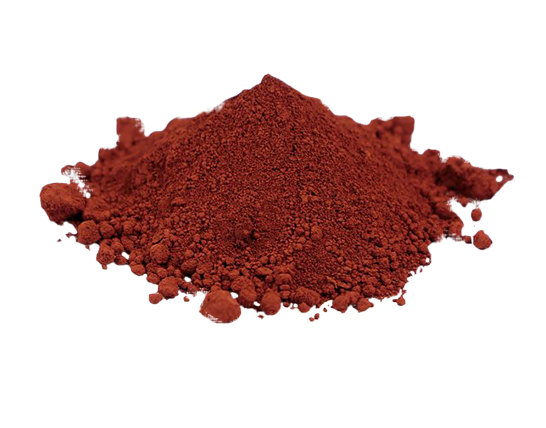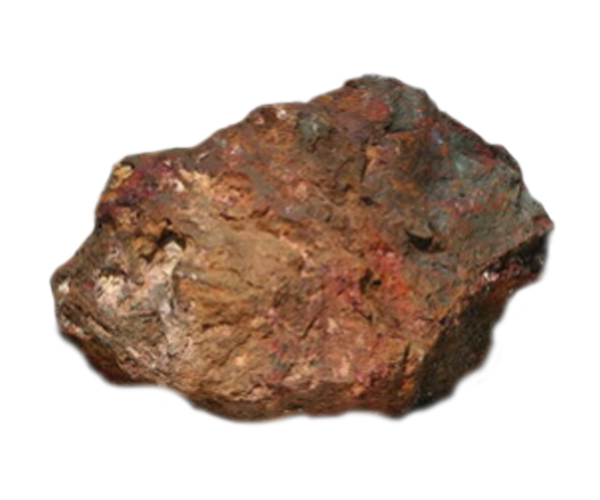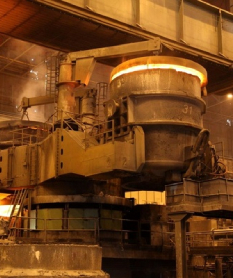What is bentonite uses?
Bentonite and bentonite uses , a type of absorbent and clay-rich rock, has found its way into numerous industries due to its versatile properties. This natural


Hematite is one of the most useful minerals that is used in various industries due to its physical and chemical properties. This mineral, which is better known by the formula Fe2o3 in the market, is iron oxide and is mainly found in sedimentary, igneous, and metamorphic rocks.
Iron compounds in the earth’s crust have different forms, which can be mentioned below:
Hematite is one of the iron oxides. This product is mostly in powder form and consists of red and black pigments. Hematites, which have black crystals, are mainly used in the jewelry industry. One of the most important subgroups of this mineral is Apologist. The amount of water in this mineral is very low, which is why it is mainly used in the steel industry.
The structure of hematite is crystalline, fibrous, politic, and microbial. Hematite is magnetic and dissolves in hydrochloric acid.
Some of the properties of hematite are as follows:
| SiO2 | 5.16 |
| Al2O3 | 0.41 |
| BaO | < |
| CaO | 6.30 |
| Fe2O3 | 77.5 |
| K2O | < |
| MgO | 2.32 |
| MnO | 0.16 |
| Na2O | < |
| P2O5 | < |
| So3 | 0.07 |
| TiO2 | 0.05 |
| LOI | 8.1 |
| Sr | < |
Different methods are used to process hematite. Choosing the right method for processing these products can be an effective step in producing quality and pure hematite. In order to determine the appropriate method for processing, the following three steps are mainly performed:
Since the existing tailings have a specific weight of 2.7 grams per cubic centimeter and iron oxide has a specific weight of 5.5 grams per cubic centimeter. Processing units mainly consider gravity methods as the hematite processing method. This method is less expensive compared to other methods, so its use is more common. Among the gravity methods used for processing, the following can be mentioned:

As mentioned, hematite is one of the most useful minerals in various industries. This product has been welcomed in many manufacturing industries due to its appearance and structural features. Among the applications of this iron oxide in industries, the following can be mentioned:
The most application of hematite in various industries is related to the drilling industry because this mineral has a very high permeability coefficient and significantly reduces the costs of drilling mud. In general, the drilling hematite used in the drilling industry is a 200 mesh powder and is used to increase the weight of drilling fluids and mud.
Another use of hematite is in the paint industry as a primary pigment because this mineral has a very high density and absorbs much less oil. This pigment is used in oil paints as a coating in equipment and railway lines and metal buildings in order to prevent corrosion and rusting of iron in these collections.
Hematite is used in the production of synthetic polymers such as vinyl, polyurethane and epoxies, and many other polymer materials. About 8% of hematite produced in the world is used in the production of rubber and plastic materials.

Other uses of hematite include the ceramic industry. The structural properties of iron oxide have caused it to be used as refractory pigments, so the use of iron oxide in the ceramic firing process can preserve ceramic colors and their decorations. The combination of this substance with the oxide of other metals can produce more diverse colors such as brown, yellow, red, black, etc.
Among the most important uses of hematite are brick and cement industries. Since this substance has good chemical resistance and stability in its nature, it is used as a pigment in brick and cement industries. The reasonable price of this product is another important factor that has made this product widely used in the brick-making industry.
Hematite is used as a color in the glass industry. The pigments in this material have an acceptable resistance to heat, and for this reason, they can be used as a raw material for glass production.
The most common use of hematite in the steel industry is as a raw material or iron ore for the production of iron and steel.
The second most important industry for the use of hematite is the paint industry. In this context, hematite is used as a pigment and color, in varnishing and also in the production of colored coatings to protect against rust.
In the plastic and resin industry, hematite is used as a natural pigment in the production of vinyl, phenolic, polyethylene, and epoxy. 6 to 8% of the global consumption of iron oxide pigments is actually for the production of colored plastics.

Another use of hematite is in the paint industry as a primary pigment because this mineral has a very high density and absorbs much less oil. This pigment is used in oil paints as a coating in equipment and railway lines and metal buildings in order to prevent corrosion and rusting of iron in these collections.

Hematite is used in the production of synthetic polymers such as vinyl, polyurethane and epoxies, and many other polymer materials. About 8% of hematite produced in the world is used in the production of rubber and plastic materials.

Other uses of hematite include the ceramic industry. The structural properties of iron oxide have caused it to be used as refractory pigments, so the use of iron oxide in the ceramic firing process can preserve ceramic colors and their decorations. The combination of this substance with the oxide of other metals can produce more diverse colors such as brown, yellow, red, black, etc.

Among the most important uses of hematite are brick and cement industries. Since this substance has good chemical resistance and stability in its nature, it is used as a pigment in brick and cement industries. The reasonable price of this product is another important factor that has made this product widely used in the brick-making industry.
With more than 20 years of experience, relying on its technical knowledge and expert staff, Kane Aray Sepahan Company has been able to produce hematite with very high purity and quality to supply various industries. Compliance with all the necessary standards to produce high-quality products in order to meet the needs of our customers is our main priority, please contact us if you have any questions or requests.
Bentonite and bentonite uses , a type of absorbent and clay-rich rock, has found its way into numerous industries due to its versatile properties. This natural

Introduction But Application of manganese in industry Manganese, a versatile transition metal, plays a crucial role in various industries due to its unique properties. This essay

What is Gilsonite Sealer? Gilsonite sealer, derived from the unique natural resource known as Gilsonite, has become a significant player in the realm of sealcoating for

And what differentiates manganese oxide & rock and Other products of Kane Ara from other competitors. What is the price of manganese here? Why should choose
Multilingual WordPress with WPML